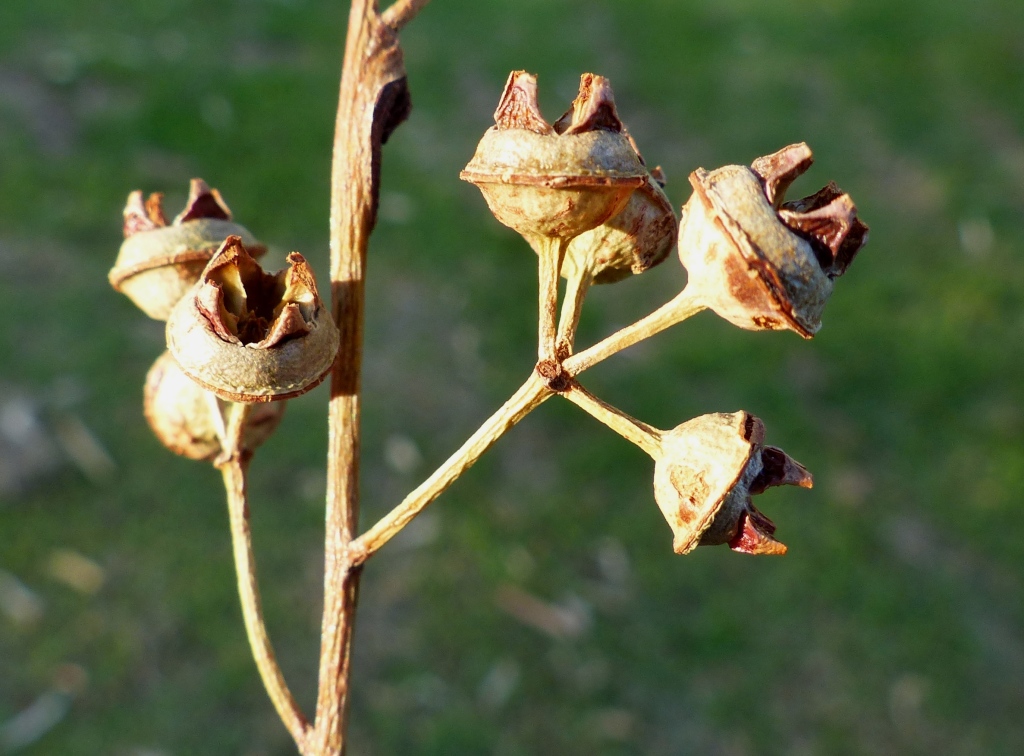Eucalyptus camaldulensis
Dehnh. River Red-gumTree to 40 m tall; bark smooth, mottled, shedding at intervals throughout the year showing white, yellow and grey, becoming roughened at base. Juvenile leaves petiolate, soon alternate, broadly lanceolate to lanceolate, to 11 cm long, 3 cm wide, dull green; adult leaves petiolate, alternate, lanceolate, 10–20 cm long, 1–2 cm wide, concolorous, dull, green; reticulation dense, with numerous (rarely few or absent), clear, yellow and green island oil glands. Inflorescences axillary, unbranched; peduncles to 2 cm long, 7-flowered; buds pedicellate, hypanthium hemispherical; operculum beaked, to 1 cm long, 0.5 cm diam., scar present; stamens inflexed; anthers dorsifixed, cuneate; ovules in 6 vertical rows; flowers white. Fruit pedicellate, hypanthium hemispherical, to 0.6 cm long, 1 cm diam.; disc ascending; valves 4, exserted; seed yellow or yellow-brown, cuboid, smooth, hilum terminal. Flowers summer.
LoM, MuM, Wim, GleP, Brid, VVP, VRiv, MSB, RobP, MuF, GipP, OtP, WaP, Gold, CVU, GGr, DunT, NIS, HSF, HNF, VAlp. Also WA (native and naturalised), NT, SA, Qld, NSW, ACT. Widespread along rivers of all continental Australia. In Gippsland apparently no further east than the Mitchell River.
The species varies throughout Australia in the colour of both juvenile and adult leaves, shape of the operculum and associated staminal flexion, and in its ability to survive in a variety of well-watered and seasonally arid sites. Seven subspecies are currently recognised to accommodate this variation (see McDonald et al. 2009), with only the type subspecies in Victoria (but also see notes under Eucalyptus aff. camaldulensis (Torrumbarry), E. ×studleyensis, and E. ×oxypoma).
It is the most widely planted eucalypt outside Australia.
Brooker, M.I.H.; Slee, A.V. (1996). Eucalyptus. In: Walsh, N.G.; Entwisle, T.J., Flora of Victoria Vol. 3, Dicotyledons Winteraceae to Myrtaceae, pp. 946–1009. Inkata Press, Melbourne.
 Spinning
SpinningMcDonald, M.W.; Brooker, M.I.H.; Butcher, P.A. (2009). A taxonomic revision of Eucalyptus camaldulensis (Myrtaceae). Australian Systematic Botany 22: 264–268.




